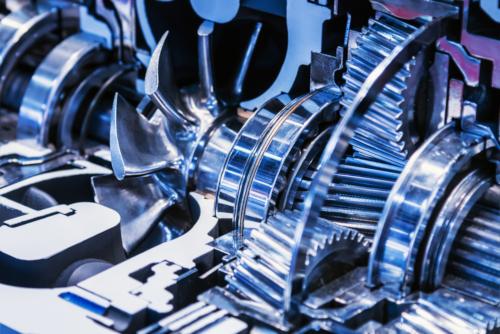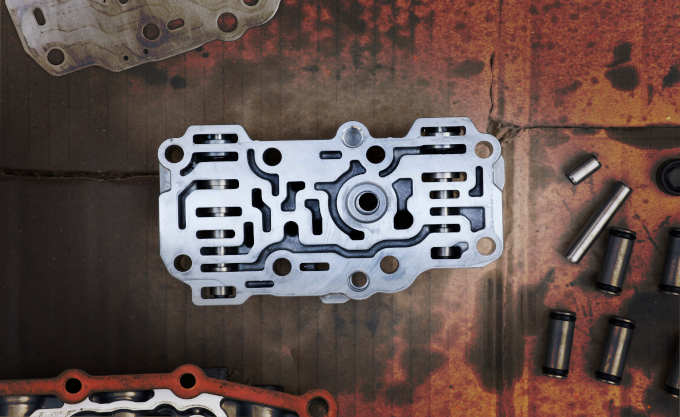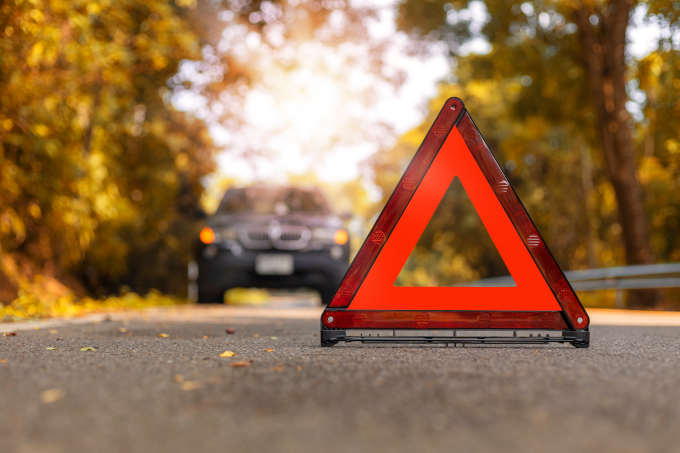It's an age-old debate - do you or don't you need automatic transmission service?
Some swear by it. They say it's added tens of thousands of miles to their transmissions. Others say automatic transmission service is the worst thing they've ever done to their car.
With experiences at both ends of the spectrum, how do you make the right choice?
Fear not - our goal today is to separate the facts from the fiction so you can make an informed choice.
Automatic Transmission Basics
The transmission harnesses the power produced by the engine. It then distributes it to the wheels in the most efficient way possible. Without a transmission, your car would travel too fast and out of control.
For this article, we'll focus on automatic transmissions. Fact is a very small percentage of today's cars have manual transmissions.
Automatic transmissions use fluid to supply pressure to clutches and bands. The clutches and bands determine the proper gear ratio. A torque converter regulates the fluid pressure.
The clutches and bands change which gears are rotating and remaining fixed. This allows the gear ratio to change even though all the gears are engaged.
So do you need automatic transmission maintenance? In a word, yes.
The most important part of automatic transmission maintenance is fluid maintenance. Automatic transmission fluid, or ATF, does more in the transmission than engine oil does in the engine.
Engine oil only lubricates an engine's internal components. ATF lubricates moving parts, cools the transmission and provides fluid pressure to change the gear ratios.
Fluid leaks can develop as gaskets wear out. Transmission fluid gets contaminated with tiny metal particles. And, although it doesn't burn up, ATF does break down over time.
For those who say automatic transmission service was the worst thing they ever did, keep this in mind. Transmission service won't undo the damage already done.
Worn out components can't be restored to like-new condition by bathing them in fresh fluid. It doesn't work that way.
Bottom line - an automatic transmission needs the correct type of fluid, in the right amount, and the right condition. Without all these, your transmission can't do what it's designed to do.
Automatic Transmission Service Intervals
Automatic transmission service is a numbers game.
What mileage intervals does the manufacturer recommend?
What does my mechanic say?
What else do I need to consider?
With all the different recommendations out there, it's a recipe for analysis paralysis. In the meanwhile, more and more miles are being put on your transmission.
The best place to start is with your manufacturer's recommended service interval. They built your car so they know when your automatic transmission needs servicing.
Some new car transmissions are sealed units with fluid that lasts up to 150,000 miles. And they don't have dipsticks so you can't check the fluid level, or quality, anyway.
Don't make the mistake of assuming your transmission is the same because it's new. Many newer automobiles still need transmission service every 30,000 - 60,000 miles. CVT's, or continuously variable transmissions, often need service at intervals less than 30,000 miles.
Your mechanic may recommend auto transmission service at shorter intervals than the manufacturer. This isn't a bad thing and it doesn't mean they're trying to make more money.
Servicing your transmission at shorter intervals won't hurt it. In fact, it may be necessary if any of the following driving conditions apply.
- frequent stop-and-go driving
- heavy towing
- snow plowing
- you live in a hotter climate
When you service your transmission is important but so is how. There are different methods with different costs and different levels of effectiveness.
Drain and Fill Vs. Flush
The automatic transmission has been around since the 1930s and, for most of that time, there was one method of servicing it.
This method involves removing the transmission pan and draining out the fluid. After that, the pan gets cleaned and the filter replaced. Then the pan gets reinstalled and new fluid added.
Critics of the drain and fill service say it’s not as effective as other methods. They say it doesn’t completely service your transmission because around 30% of the transmission fluid stays in the torque converter.
The other popular transmission service is a complete flush. Using the transmission cooler lines, almost all the old ATF is pumped out of the transmission.
Sometimes an additive is pumped in to remove buildup first. Once the old fluid is out, the filter is changed and fresh fluid pumped in.
This method was developed once front-wheel drive vehicles became the norm. Smaller, transverse-mounted transmissions got hotter than their predecessors.
With the ATF under more stress, manufacturers developed synthetic transmission fluids. When the new fluids didn’t help significantly, they rethought the transmission servicing process.
In the beginning, transmission flushes were only available at dealerships. But soon, other companies developed similar equipment for use in non-dealership repair shops.
But the problem still wasn’t solved.
On the surface, what appeared to be a more effective transmission service created a new set of problems. Sometimes small particles, loosened by the flush, travel into the valve body. Then they get stuck. Now your transmission has a bigger problem.
So for those folks who say transmission service is the worst thing they ever did to their car - they have a point. Especially if they developed shifting issues afterward.
The Wise Choice
A transmission flush takes longer, costs more and can do more harm than good. This is especially true in vehicles that haven’t had regular transmission service in the past.
That’s why we recommend our Safeguard Transmission Service.
Our service starts with a Transmission Multi-Point Check. From there we drain the old fluid from the transmission pan.
Next, we drop the transmission pan, and thoroughly inspect it. We remove particles, clean the pan and install a new gasket.
Then we replace the transmission filter, reinstall the pan and add new ATF. The final step is a test drive, followed by a leak check.
Sometimes the traditional ways of doing things are still the best.
Don't wait until you hear strange noises when shifting.
Don't wait until your transmission starts slipping.
Don't wait until there's a dark red puddle in your driveway.
Follow your manufacturer's guidelines and get automatic transmission service when needed. You'll be glad you did.











